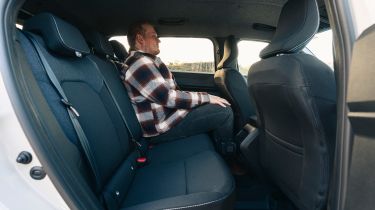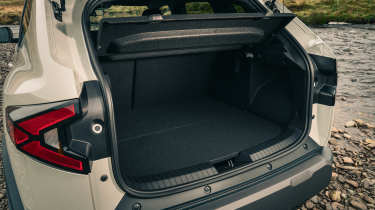Dacia Duster review - Boot space, practicality & dimensions
“The latest Dacia Duster is more practical than before, with a big boot, good interior space and clever storage solutions”
As one of the brand’s biggest models, the Dacia Duster aims to deliver practicality as well as value for money, which is a strategy that’s also worked for rival budget brand Skoda. The Duster is about the same length and height as it was before, but this time it’s a whole 117mm wider.
Dacia debuted a handy feature called the YouClip system on its recent concept cars, and the Duster is the first of its production models to include it. It consists of a series of clips dotted all around the cabin, the amount of which varies depending on the trim level. They can hold accessories such as a tablet holder, storage pouch, or a smartphone holder with or without an in-built wireless induction charger. There’s also an optional 3-in-1 holder which comes factory-fitted in Extreme models and can be used as a cupholder, bag hook or lamp.
As a general rule, the Duster feels very spacious inside and even taller adults will feel comfortable up front or in the back. There’s plentiful headroom in any of the five seats, and the extra width of the cabin means three passengers can squeeze into the back when needed. While tall passengers may find their knees just grazing the back of the front seats, there is at least plenty of room for feet beneath them.
| Size comparison | |||
| Model | Length | Width | Height |
| Dacia Duster | 4,343mm | 1,921mm | 1,656mm |
| Nissan Qashqai | 4,425mm | 1,835mm | 1,625mm |
| Skoda Karoq | 4,382mm | 1,841mm | 1,603mm |
| MG ZS | 4,323mm | 1,809mm | 1,625mm |
Does the Dacia Duster have a big boot?
The Dacia Duster’s larger width has resulted in a boot capacity increase over that of the old model by 72 litres (for the two-wheel drive model) and the boot opening itself is wider, so it’s more usable. Go for the four-wheel drive version and a little boot space is robbed for a total of 450 litres. With the rear seats folded down there’s up to 1,696 litres to play with (1,635 litres in the 4x4 model). That’s more than the space offered in the Nissan Qashqai, which only offers up to 504 litres of space, or 1,441 litres with the seats folded down.
More reviews
The Skoda Karoq boasts a comparable standard boot space of 521 litres, but versions offered with sliding rear seats can increase this to 588 litres, and folding them down frees up 1,630 litres of capacity.
There’s extra storage space on the roof of the Duster, too, with all models getting roof bars that can support a weight of up to 80kg – that could come in especially handy if you plan to camp in your Duster and have already taken up space in the boot for the Sleep Pack box.
| Boot space comparison | |
| Model | Boot space |
| Dacia Duster | 517 litres |
| Skoda Karoq | 521 litres |
| Nissan Qashqai | 504 litres |
| MG ZS | 448 litres |
Is the Dacia Duster a good tow car?
Whether the Dacia Duster is a good tow car wildly varies depending on which engine you go for. The best load-lugger is the TCe 130 1.2-litre engine, because it can haul up to 1,500kg in both two-wheel drive or four-wheel drive configurations – that equates to a medium-sized caravan, which isn’t bad for the Duster’s class. The next best is the 1.0-litre entry-level car which can tow up to 1,200kg. The Hybrid has the worst towing capacity, at up to just 750kg. Some rivals like the Volkswagen T-Roc can tow more.















